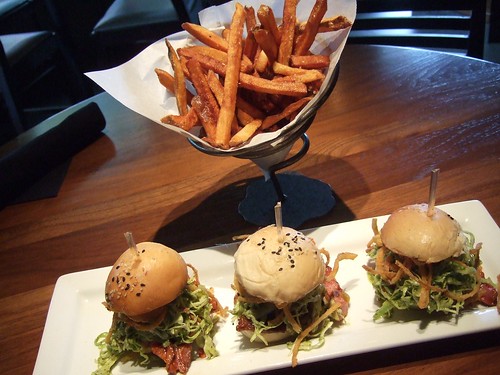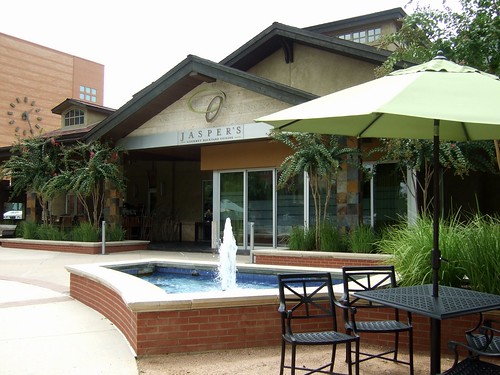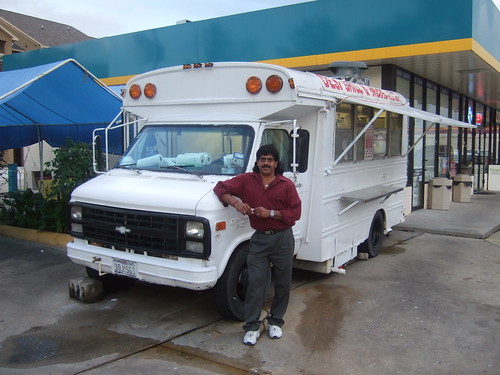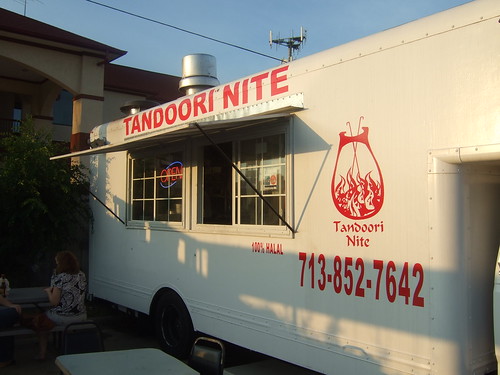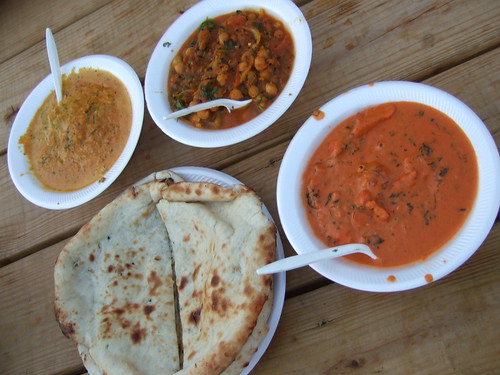For a lot of Houstonians, The Woodlands is that place up north where you go to see concerts. We make the trek up I-45 to the Cynthia Woods Mitchell Pavilion to see the likes of Jimmy Buffett, Van Morrison, or, perhaps because we got free tickets, Creed.
We may catch a bite while we're there - maybe a sandwich shop or Landry's or the Cheesecake Factory. And when the music stops, we drive back to the cocoon of the inner loop.
Recently, The Woodlands gained notoriety for more than just concerts. Travel + Leisure Magazine named The Woodlands one of the "Coolest Suburbs Worth a Visit." Uber-indie rock band Arcade Fire wrote a whole album called "The Suburbs" inspired by the founding members' experience growing up there ("Living in the sprawl/Dead shopping malls rise like mountains beyond mountains"). And Hubbell & Hudson, the gourmet supermarket and foodie mecca, was named Retailer of the Year by the National Association for the Specialty Food Trade.
Read More...It's this last bit that I find particularly interesting. Recently, I've had the opportunity to spend time at several of The Woodlands' best restaurants, always with an obligatory trip to Hubbell & Hudson before dinner to pick up some fresh pasta, dry aged steaks, or bread that's baked fresh several times throughout the day. After dinner, on the way back to Houston, with a cooler in the trunk filled with Hubbell & Hudson goodies I can't get inside the loop, I've found myself in agreement with something others have noticed: The Woodlands is becoming a legitimate dining and food destination.
And it's more than just the restaurants that make it an attractive source for good food. As an urban development, The Woodlands also benefits from an enlightened sense of design and planning. The Town Center area is built around pedestrian friendly areas such as Waterway Square and Market Square. Restaurants, bars and shops commingle in a sophisticated way to encourage outdoor eating, strolling from restaurants to coffee shops or wine bars for a nightcap, running into neighbors, lounging on benches, listening to free concerts and eating ice cream with the family. Of course, The Woodlands can't measure up to the well-established and effortless urbanity of the piazzas of Europe, but it would be difficult to find a better-planned and more successful urban experience in the greater Houston area.
Which, I believe, adds to a great dining experience. Sidewalk cafés may be both a cliché and a holy grail of utopian city planners, but the fact is that most city dwellers enjoy the bustle and camaraderie of outdoor dining, busy sidewalks and adjacent piazzas filled with families strolling around in a suburban Texas version of the la passegiata. The Woodlands creates this sense of urbanity in a convincing way, and this adds to the attraction of many of its finest restaurants.
Take Jasper's for example. Billing itself as "Gourmet Backyard Cuisine," this Dallas-based restaurant anchors the west end of the Market Square neighborhood. Fancy slogans aside, Jasper's offers kicked-up comfort food in an urbane, upscale setting. The food is consistently well-executed and the service is always professional and friendly. Two large outdoor seating areas overlook the rectangular greenspace of Market Square. Jasper's outdoor seating areas, with their groupings of tables, couches and fireplaces, contribute to the uniquely urban quality of Market Square, especially when the weather is cooler in the spring and fall. Not to be outdone, the highly-regarded 1252 Tapas bar sits on the north side of Market Square, adjacent to the always busy Crú Wine Bar. The east end of the square is anchored by the Tommy Bahama Café - named after and adjacent to the clothing retailer of the same name.
Of course, The Woodlands isn't without its perceived drawbacks. It's both blessed and cursed by its image as an unmistakably wealthy enclave (median family income is $113,243). On the plus side, it's a relaxed and comfortable place to bring a family for dinner or a concert. On the other hand, its predominantly white population (92%) may feel homogeneous and sanitized to some people. Wealth and status are revered and flaunted here, from the obligatory Bentley parked in front of the best restaurants to the tanned and toned soccer moms driving Cadillac Escalades.
Still, a palpable sense of community and urban living in The Woodlands can't be denied. And the dining options continue to expand. It's been reported that Marco Wiles, the quintessential inner loop chef and restaurateur, is venturing north to open a restaurant in the space formerly occupied by Tesar's Modern Steak and Seafood. Though for some it may seem like a world away, The Woodlands continues to build on its growing reputation as a food and dining destination for all Houstonians.
This blog entry was originally posted 16 September 2010 on the www.29-95.com website.
